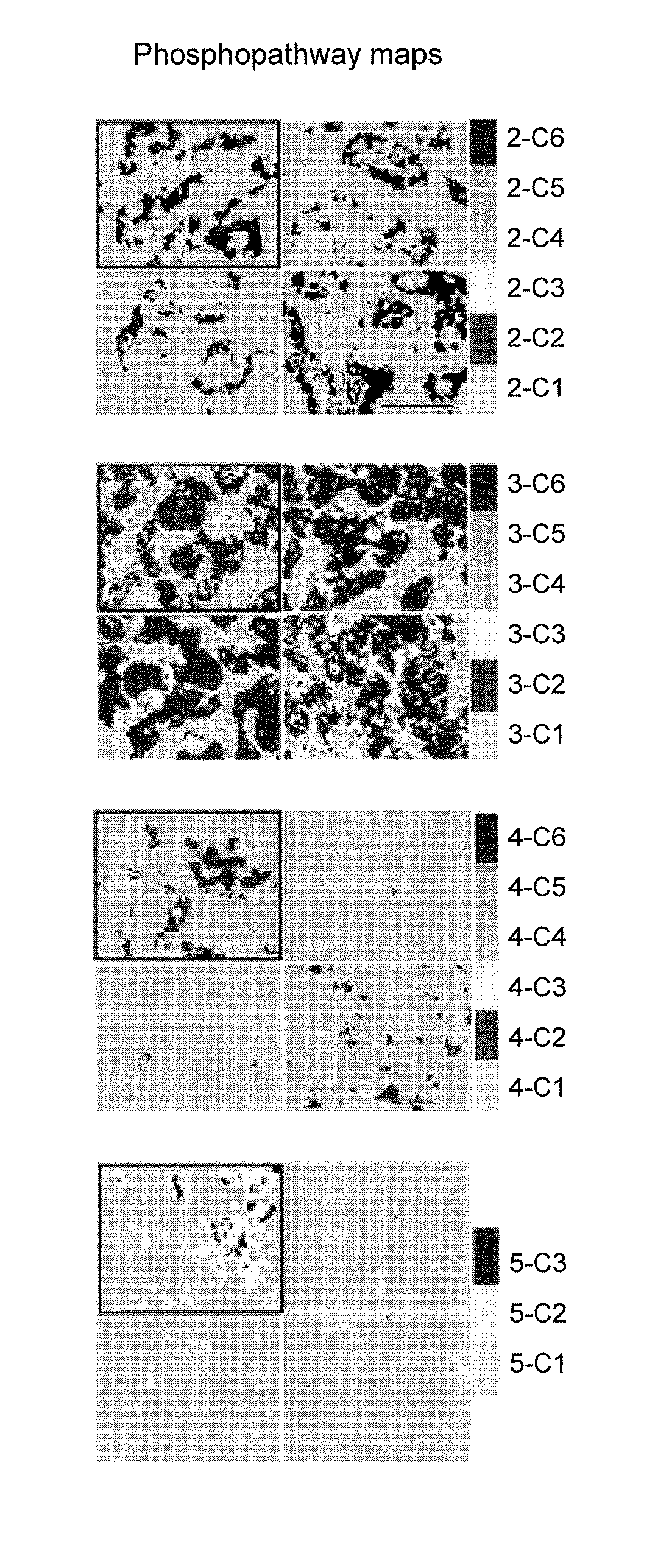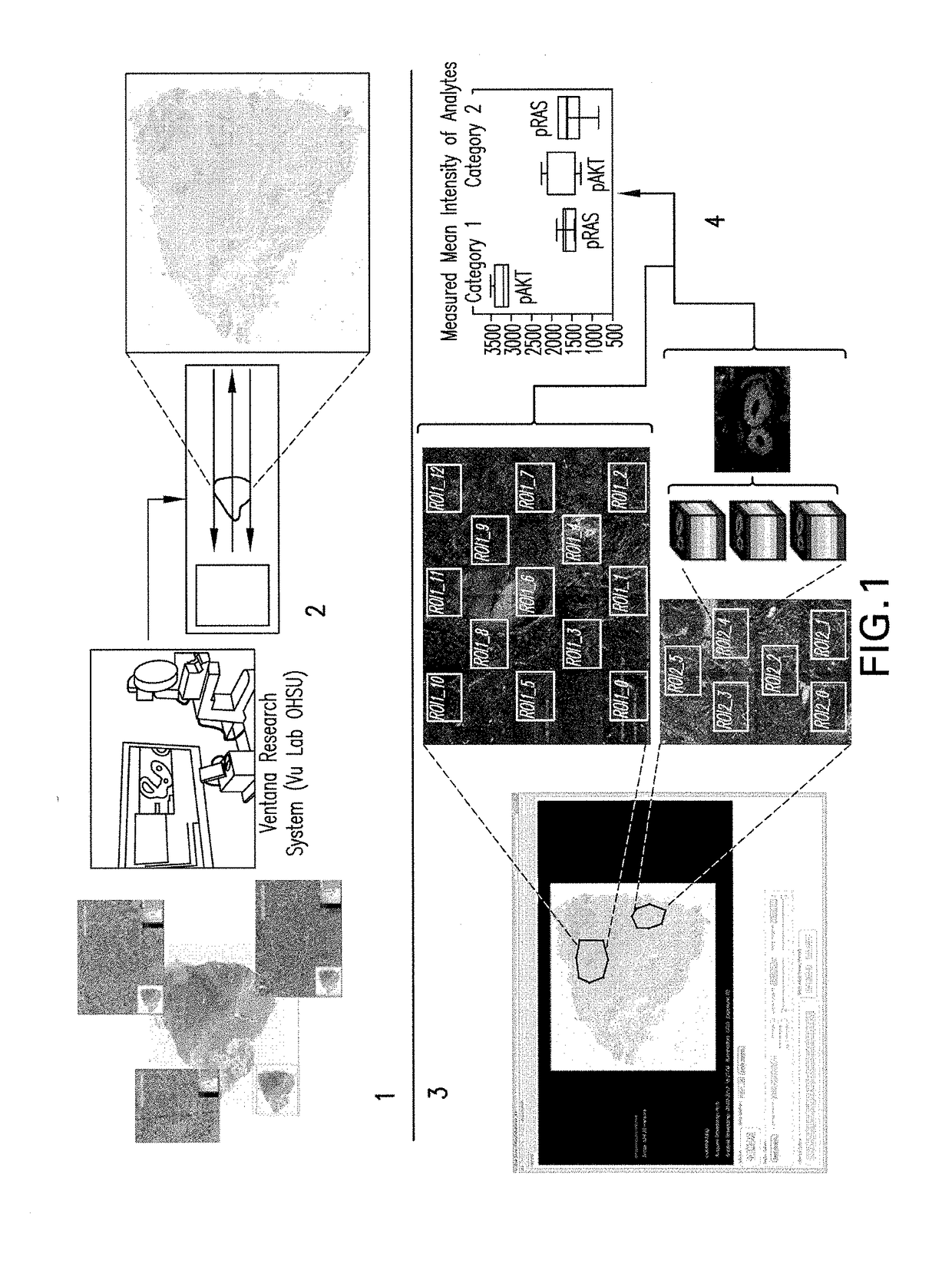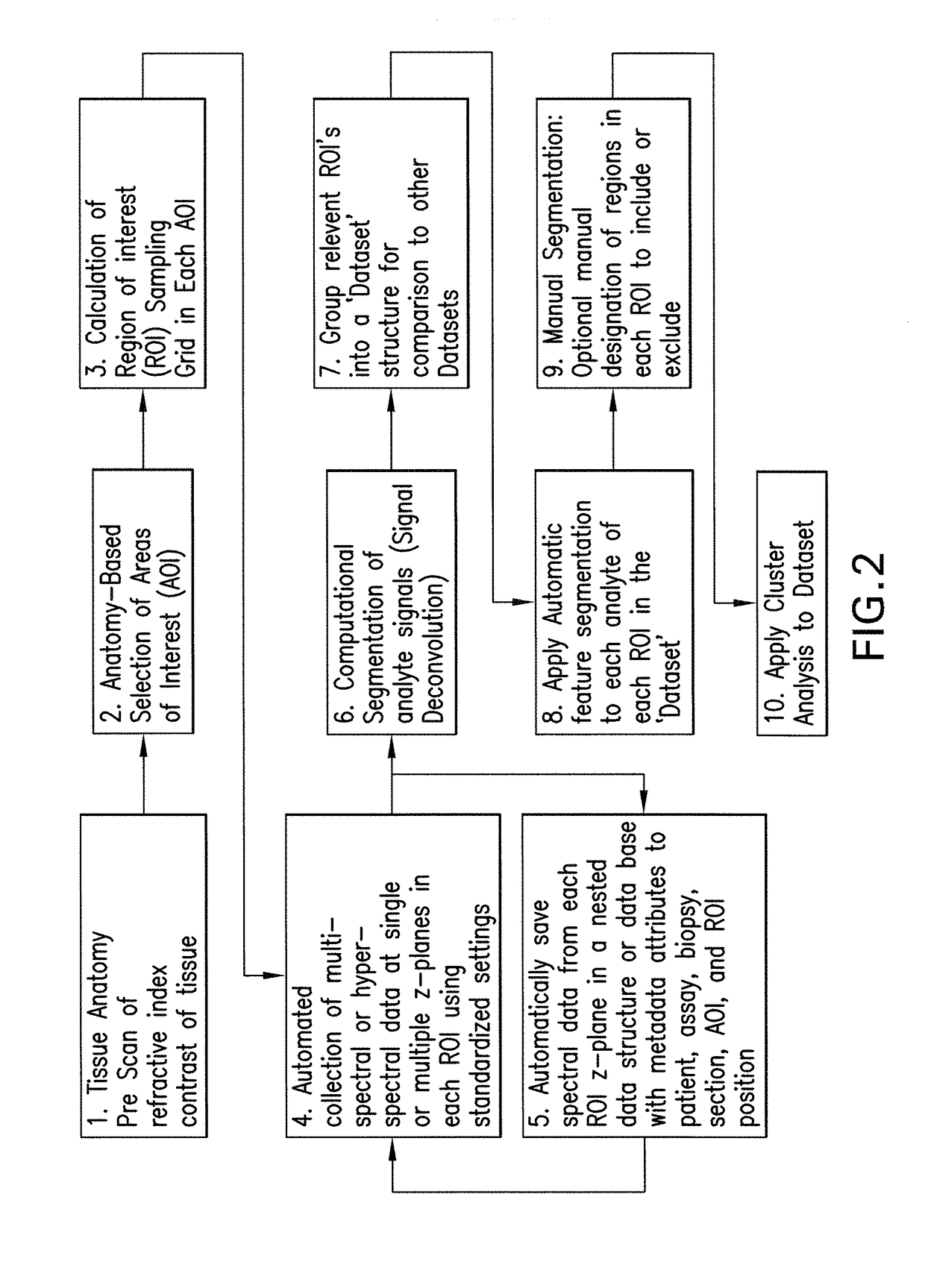Methods, Systems, and Apparatuses for Quantitative Analysis of Heterogeneous Biomarker Distribution
a biomarker and distribution technology, applied in image analysis, image enhancement, instruments, etc., can solve the problems of sample general deformation, deleterious effect, and not having a deleterious effect on processing
- Summary
- Abstract
- Description
- Claims
- Application Information
AI Technical Summary
Benefits of technology
Problems solved by technology
Method used
Image
Examples
Embodiment Construction
I. ABBREVIATIONS AND DEFINITIONS
[0068]In order to facilitate review of the various examples of this disclosure, the following explanations of abbreviations and specific terms are provided:
[0069]CISH: Chromogenic in situ hybridization.
[0070]CRC: colorectal cancer
[0071]FFPE tissue: Formalin-fixed, paraffin-embedded tissue.
[0072]FISH: Fluorescent in situ hybridization.
[0073]H&E: Hematoxylin and eosin staining.
[0074]IHC: Immunohistochemistry.
[0075]ISH: In situ hybridization.
[0076]NBF: neutral buffered formalin solution.
[0077]NSCLC: non-small cell lung cancer
[0078]PI3Ks: phosphatidylinositol 3-kinases. Also referred to as Phosphatidylinositol-4,5-bisphosphate 3-kinase, phosphatidylinositide 3-kinases, PI 3-kinases, PI(3)Ks, and PI-3Ks.
[0079]TNBC: triple negative breast cancer
[0080]Analyte: A molecule or group of molecules that are to be specifically detected in a sample.
[0081]Analyte-binding entity: Anything that is capable of specifically binding to an analyte. Examples of analyte-bindi...
PUM
 Login to View More
Login to View More Abstract
Description
Claims
Application Information
 Login to View More
Login to View More - R&D
- Intellectual Property
- Life Sciences
- Materials
- Tech Scout
- Unparalleled Data Quality
- Higher Quality Content
- 60% Fewer Hallucinations
Browse by: Latest US Patents, China's latest patents, Technical Efficacy Thesaurus, Application Domain, Technology Topic, Popular Technical Reports.
© 2025 PatSnap. All rights reserved.Legal|Privacy policy|Modern Slavery Act Transparency Statement|Sitemap|About US| Contact US: help@patsnap.com



